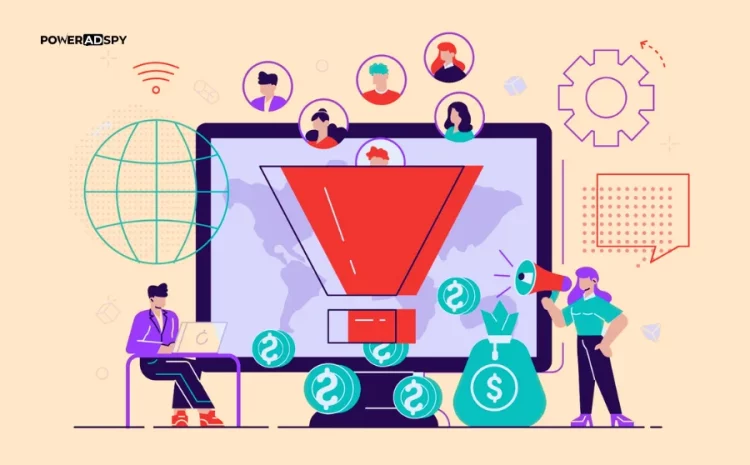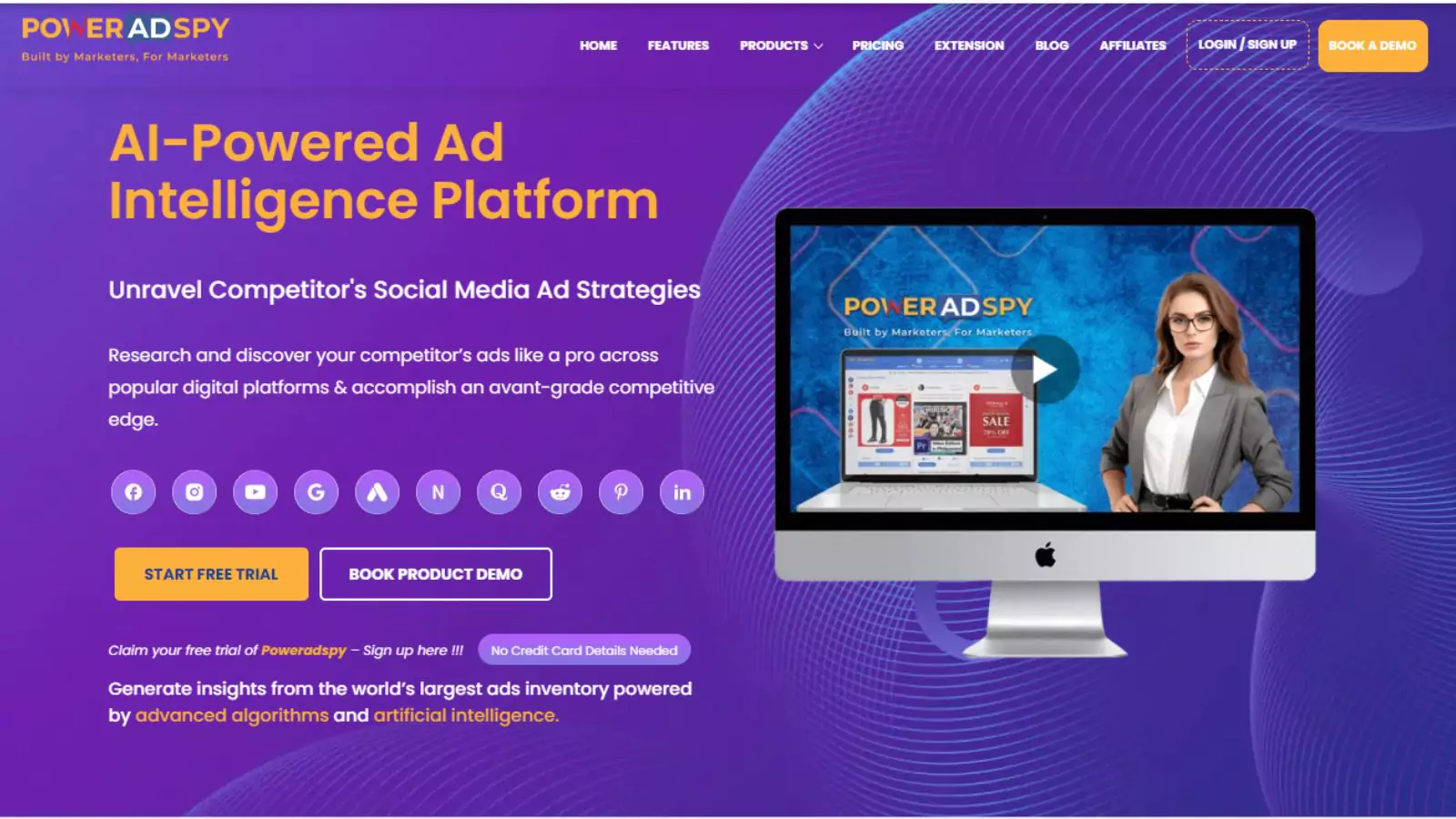How To Create A Customer Acquisition Strategy In 7 Steps?
“A well-satisfied customer is the best business strategy of all”
-Michael LeBoeuf
Nowadays, marketers find it difficult to attract new customers. If you are also struggling with the same, fear not because you’re not alone. Many businesses face the challenge of acquiring customers in a competitive market. But do not worry because, in this blog post, we will delve into the realm of customer acquisition strategy.
Have you ever wondered what it takes to build a solid plan to bring in new customers? Well, wonder no more! In this guide, we’ll break down the process into seven simple steps that anyone can follow.
Whether you’re a small startup or a seasoned entrepreneur, understanding the fundamentals of customer acquisition can significantly boost your business’s growth and success.
So, let’s dive in and learn how to craft a winning acquisition strategy for customers step by step.
In a hurry? Listen to the blog instead!
What Is Customer Acquisition Strategy?
The term customer acquisition tactics or strategy is a structured plan devised by businesses to attract new customers and convert them into active users or buyers of their products or services. It encompasses a series of deliberate actions and tactics. The primary goal is to improve ecommerce cpa, identify, reach, and engage with potential customers to drive growth and expand the customer base.
The core objective of an acquisition strategy is to expand the customer base and drive revenue growth. Businesses typically focus on different core elements within their strategy to achieve this respective target.
5 Essential Elements Of Customer Acquisition
Creating a customer acquisition strategy requires you to consider the following elements.
Target Audience Identification
Understanding your ideal customer profile by analyzing demographics, behaviors, preferences, and pain points. Tailor your marketing efforts effectively and allocate resources wisely to engage the right audience.
Channel Selection and Optimization
Choose the most effective channels to reach your target audience, such as social media, search engines, email marketing, or traditional platforms. Create compelling content, optimize for search engines, and leverage analytics for continuous improvement.
Compelling Messaging And Value Proposition
Craft persuasive messaging that addresses customer pain points, highlights product benefits, and differentiates your brand. Clear, concise, and captivating messaging drives engagement and conversions.
Lead Generation And Nurturing
Generate leads in your customer acquisition strategy through tactics like content marketing, gated content, webinars, and events. Nurture leads by providing valuable information, building relationships, and guiding them through the buyer’s journey until they’re ready to make a purchase decision.
Measurement and Optimization: Continuously measure and analyze key metrics such as conversion rates, customer acquisition cost (CAC), return on investment (ROI), and customer lifetime value (CLV). Use data-driven insights to make informed decisions and optimize your acquisition strategy for better results.
What Are The Stages Of Customer Acquisition?
Understanding the stages a customer undergoes before purchasing is vital for crafting an effective customer acquisition strategy. The AIDA model outlines four key stages:
Awareness: Customers become aware of your product/service through marketing. Ecommerce online advertising, content marketing, or word of mouth are some examples of marketing efforts. At this stage, businesses aim to capture attention and generate interest in their offerings.
Consideration: Potential customers evaluate diverse options and consider whether your offering meets their needs. They compare services, seek reviews, and weigh their choices. Businesses must showcase value and relevance to stand out during this phase.
Decision: Customers decide whether to purchase your product/service or prefer a competitor after evaluation of other options. Businesses must employ persuasive tactics, such as discounts or exceptional customer service, to sway the decision in favor.
Retention: Once a customer converts, the focus shifts to retaining them. It involves providing exceptional customer support, offering loyalty programs, and fostering long-term relationships to encourage repeat business.
How To Create A Customer Acquisition Strategy?
Selling online has become increasingly challenging, with every brand developing its unique marketing approach. Acquiring and retaining customers while attracting new leads demands a strategic process. To ensure a consistent influx of new customers, focused customer acquisition processes are essential:
Step-1 Attract the Right Audience
Identifying your target audience is crucial for crafting an acquisition strategy. Instead of solely studying prospects and the market, observe existing customers. Gather firsthand information on their needs, experiences, and journeys to better define your target audience and refine your strategy accordingly. Use social media ad spy tools like PowerAdSpy to leverage robust features for identifying target audiences.
Step-2 Engage at Every Intersection
Design a customer acquisition path facilitating engagement at every touchpoint. Consider customer acquisition strategy examples to take inspiration from and craft what suits best for you. Incorporate channels like live chat to provide instant support and proactive triggers to address potential queries. Follow up with prospects throughout their journey to enhance engagement and overall experience.
Step-3 Find Where Your Prospects Are
Identify where your target audience spends time and tailor your strategy to reach them effectively. Posting content on relevant channels ensures your efforts resonate with the right audience and minimize attracting unfit customers.
Step-4 Tell Them Why They Need You
Rather than focusing solely on product features, emphasize the benefits and solutions your offering provides. Highlighting pain points and how your product addresses them resonates more with prospects and adds value to your messaging.
Step-5 Show Prospects How They’ll Be Treated
Introducing customer acquisition strategy prospects to your customer community allows them to witness firsthand how you interact with customers and address their concerns. Building a community fosters trust and credibility, encouraging prospects to become customers.
Step-6 Cross-Sells and Upsells
Leveraging cross-selling and upselling opportunities with existing customers can streamline customer acquisition. Introduce complementary products/services and demonstrate how they enhance customers’ experiences to facilitate ongoing engagement.
Step-7 Get Feedback
Refine – Repeat: Continuously seek feedback from converted prospects to refine and improve your acquisition strategy. Incorporate insights and iterate on your approach to adapt to changing market dynamics and customer preferences.
By implementing these steps and using Google ad spy tool like PowerAdSpy, businesses can develop a robust customer acquisition strategy that attracts, engages, and retains customers effectively, driving sustainable growth and success.
PowerAdSpy- Advanced Ad Intelligence Software
PowerAdSpy is a powerful tool designed to enhance customer acquisition strategies for businesses engaged in online advertising, particularly on social media platforms like Facebook and Instagram. It provides users with a comprehensive suite of features to analyze, monitor, and optimize ad campaigns. Here’s an overview of its key features and how they contribute to customer acquisition strategies:
Ad Monitoring and Analysis
PowerAdSpy allows users to monitor and analyze a vast database of ads running across various platforms. Users can search for ads by keywords, advertisers, demographics, and engagement metrics. This tool helps businesses keep track of what their competitors are doing with ads and what’s trending in the industry.
It works wonders for crafting an online customer acquisition strategy. It helps them improve their ways of getting new customers by learning from what works well for others.
Ad Performance Metrics
This ad intelligence software offers detailed insights into ad performance metrics such as engagement, reach, likes, shares, and comments. By analyzing these metrics, businesses can identify high-performing ad creatives, copywriting techniques, and audience-targeting strategies that resonate well with their target audience.
This information can inform the optimization of their ad campaigns for better customer acquisition results.
Advanced Filtering Options
PowerAdSpy allows users to filter search results based on criteria such as ad type, ad placement, date range, and engagement level. Users can customize their searches to refine their customer acquisition strategy. It also finds ads that closely align with their specific customer acquisition goals and preferences.
The level of customization enables businesses to discover relevant ad content and strategies that can inspire their campaigns.
Ad Creatives and Copy Inspiration
Businesses can explore a range of ad creatives, including images, videos, headlines, and ad copy, across different industries and niches. By gaining insights into successful ad elements, businesses can derive inspiration for crafting compelling ads that resonate with their target audience.
It can lead to improved customer engagement and higher conversion rates, ultimately enhancing the customer acquisition process.
Competitor Analysis
PowerAdSpy allows users to conduct in-depth competitor analysis by tracking their ad strategies and performance metrics. By understanding competitors’ strengths and weaknesses, businesses can identify gaps in the market, capitalize on emerging trends, and differentiate their offerings to attract new customers effectively.
The competitive intelligence of Google ad spy empowers businesses to refine their customer acquisition strategy and stay ahead in their industry.
Read More
What Is eCommerce CPA & How Does It Affect Your Business?
Online Advertising for the E-commerce Industry
Spy Google Ads In Your Niche: A Cheat Sheet To Google Ads
Benefits of Implementing Customer Acquisition Strategies
Following are the benefits of implementing acquisition strategies.
Increased Revenue: Effective customer acquisition strategies help bring in new customers, leading to increased sales and revenue for the business.
Business Growth: By consistently acquiring new customers, businesses can expand their customer base and grow their market share over time.
Improved Brand Awareness: Implementing customer acquisition strategies can enhance brand visibility and recognition as more people become aware of the products or services offered.
Enhanced Customer Relationships: A well-executed customer acquisition strategy can help businesses build strong relationships with new customers, fostering loyalty and repeat business in the long term.
Diversification of Customer Base: Acquiring customers from different demographics and geographic regions helps diversify the customer base, reducing dependence on specific market segments and mitigating risks associated with market fluctuations.
Wrapping Up
A well-crafted customer acquisition strategy is the cornerstone of business growth and success in today’s competitive landscape. By leveraging effective techniques such as targeted advertising, compelling content, and data-driven insights, businesses can attract and retain valuable customers while staying ahead of the curve.
Tools like PowerAdSpy provide invaluable assistance by offering comprehensive analysis and optimization capabilities, enabling businesses to refine their approach and maximize results. With a clear focus on understanding customer needs, delivering value, and adapting to evolving market trends, businesses can build strong, sustainable relationships that drive long-term success.
Embracing innovation and continuously refining customer acquisition strategies will undoubtedly pave the way for sustained growth and profitability in the dynamic business environment of the digital age.









